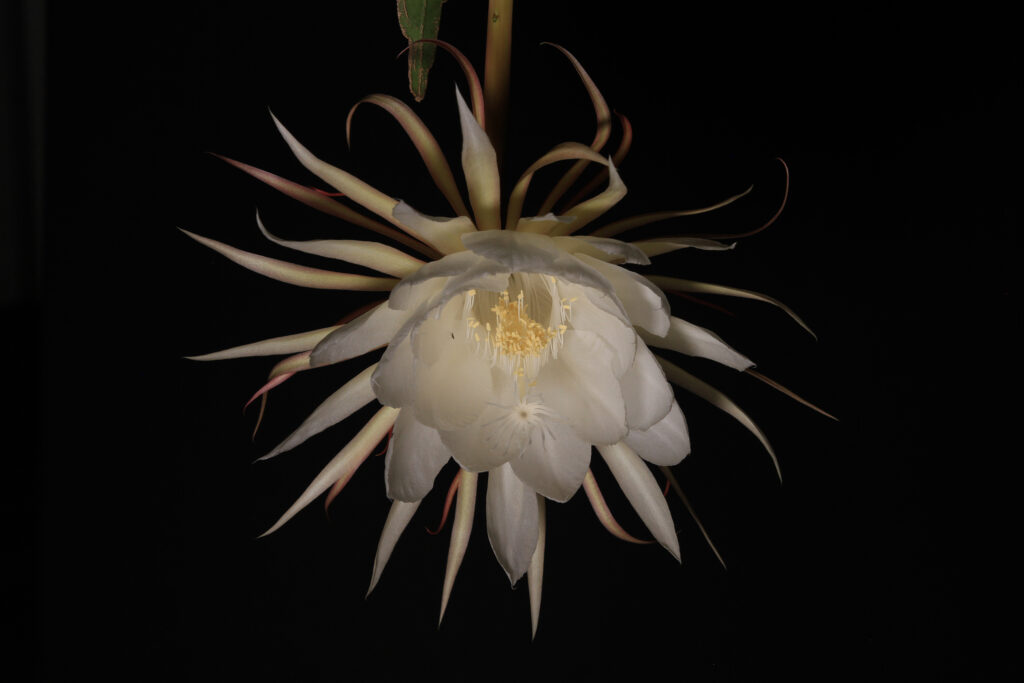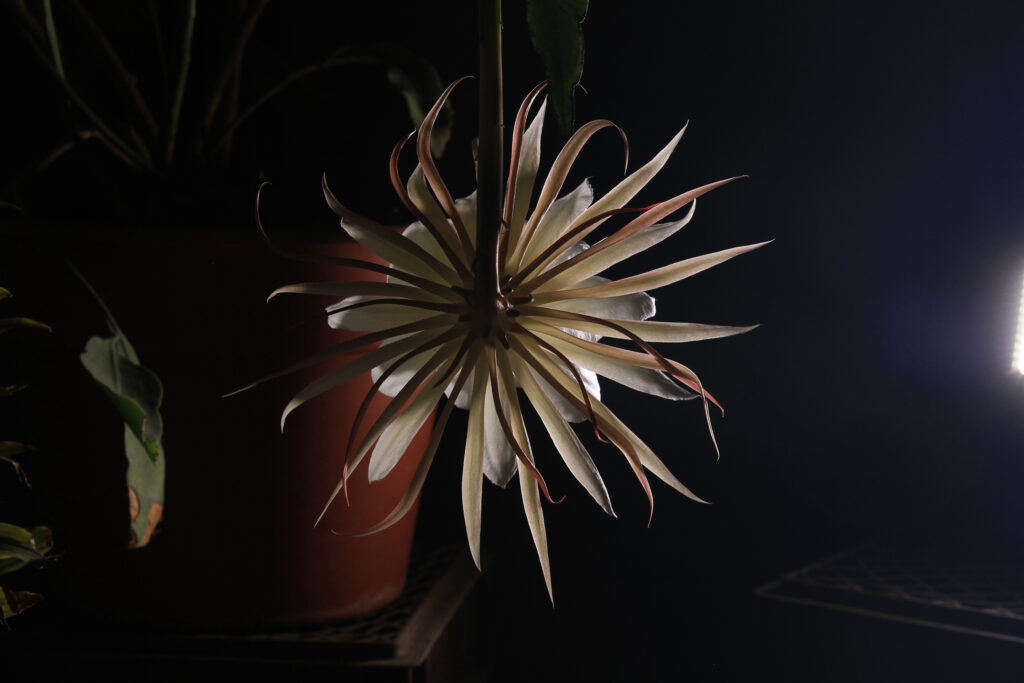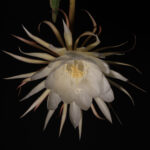Just under a year ago I started working as the Greenhouse Manager at Hope College in Holland Michigan. We have a varied collection of plants including one unruly, sprawling Orchid Cactus. This past spring it put out a significant new branch and leaves. I have had to tie it to pipes above to keep it out of the way of the door. In early July it had a large flower bud appear, but it bloomed while I was out of town, so when another bud appeared in early August, we began to keep close ritual watch on it. Coming in on the weekend and days of to check the progress and try to guess when it would bloom, it finally showed white in the end of the bud on Thursday around noon. I went back that evening and watched and photographed it for over three hours. The images here were taken between 10:45 and 11 pm. The video is a time laps compilation of about 300 images, one taken every 30 seconds for three hours. The video can be seen at this link: https://youtu.be/OJ3435tV5bw. Below is a little information about the plant.

The cactus Epiphyllum oxpetalum is known by several common names, the most often used are Night Blooming Cereus, Dutchman’s pipe cactus and Queen of The Night. If you see the lovely five inch or larger white flower, you would agree that Queen of The Night is a very fitting name as the magnificent blooms demands respect.
This member of the cactus family is a type of orchid cactus and is related to the Christmas or Easter Cactus that many of us are familiar with. The large sprawling plant grows perched high among the trees of the rain forest of Mexico and Guatemala where this plant is native. It is a tropical epiphyte to lithophyte, an organism that grows on the surface of another plant or on rocks. The plant derives its moisture and nutrients from rain, the air and debris collecting on its large flat leaves.

The large white flowers open after dark, usually between 8 and 9 pm and is fully opened by midnight. At first the momentum is slow, but in the last hour the final unfurling of the flowers moves more quickly to reveal a gorgeous white flower. The flower releases a sweet fragrance that attracts bats for pollination in its native habitat. With the first light of dawn, the flower closes as each flower only last one night.
The plant has many medicinal uses such as to clear phlegm, to strengthen the lungs, for bladder infections, and rheumatism. The flowers are also edible and can be used in soups.
Was it worth setting there for over three hours and not getting a full night’s sleep? Absolutely!
 Click on the title of a post to view a full gallery of images.
Click on the title of a post to view a full gallery of images.

